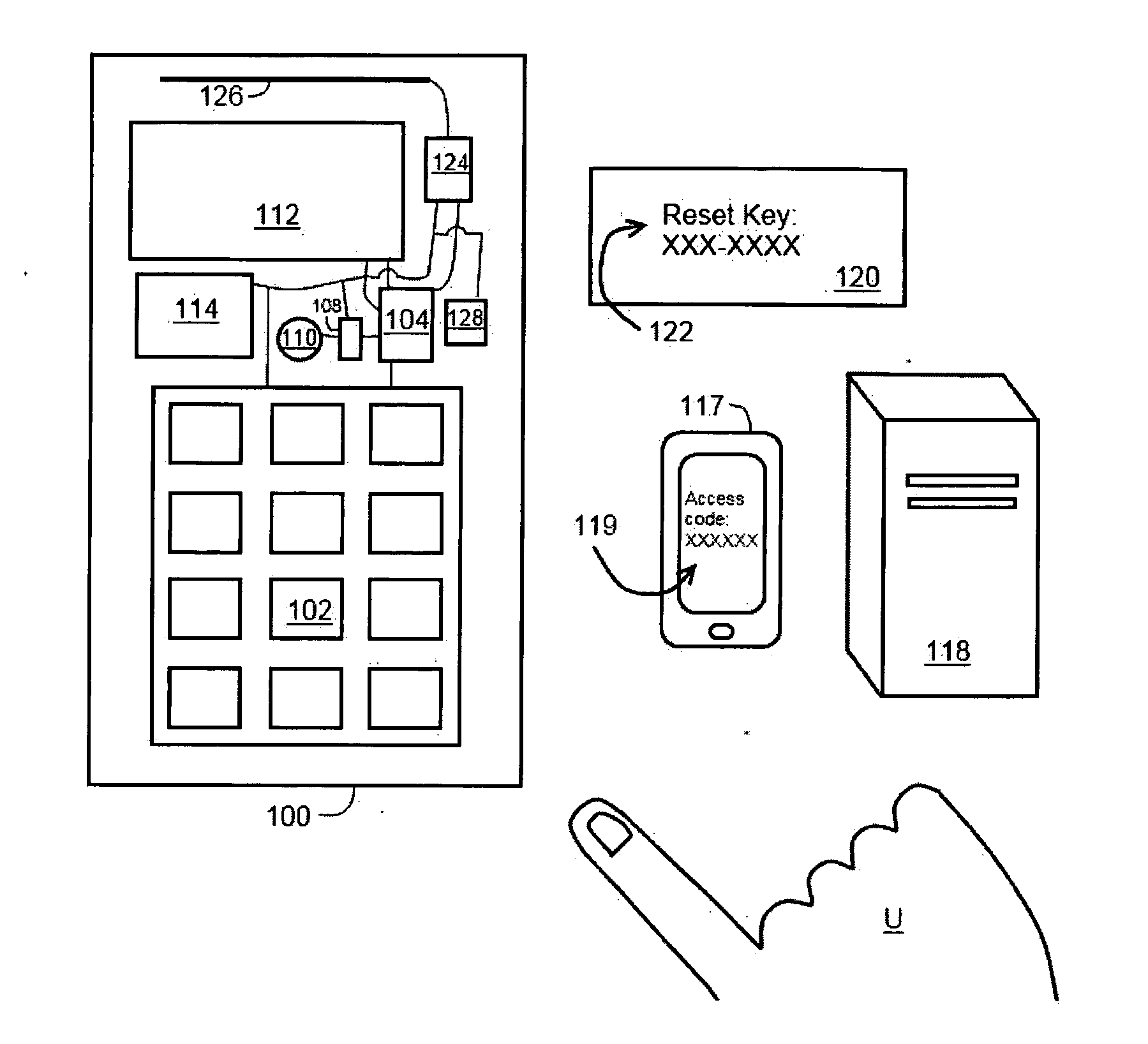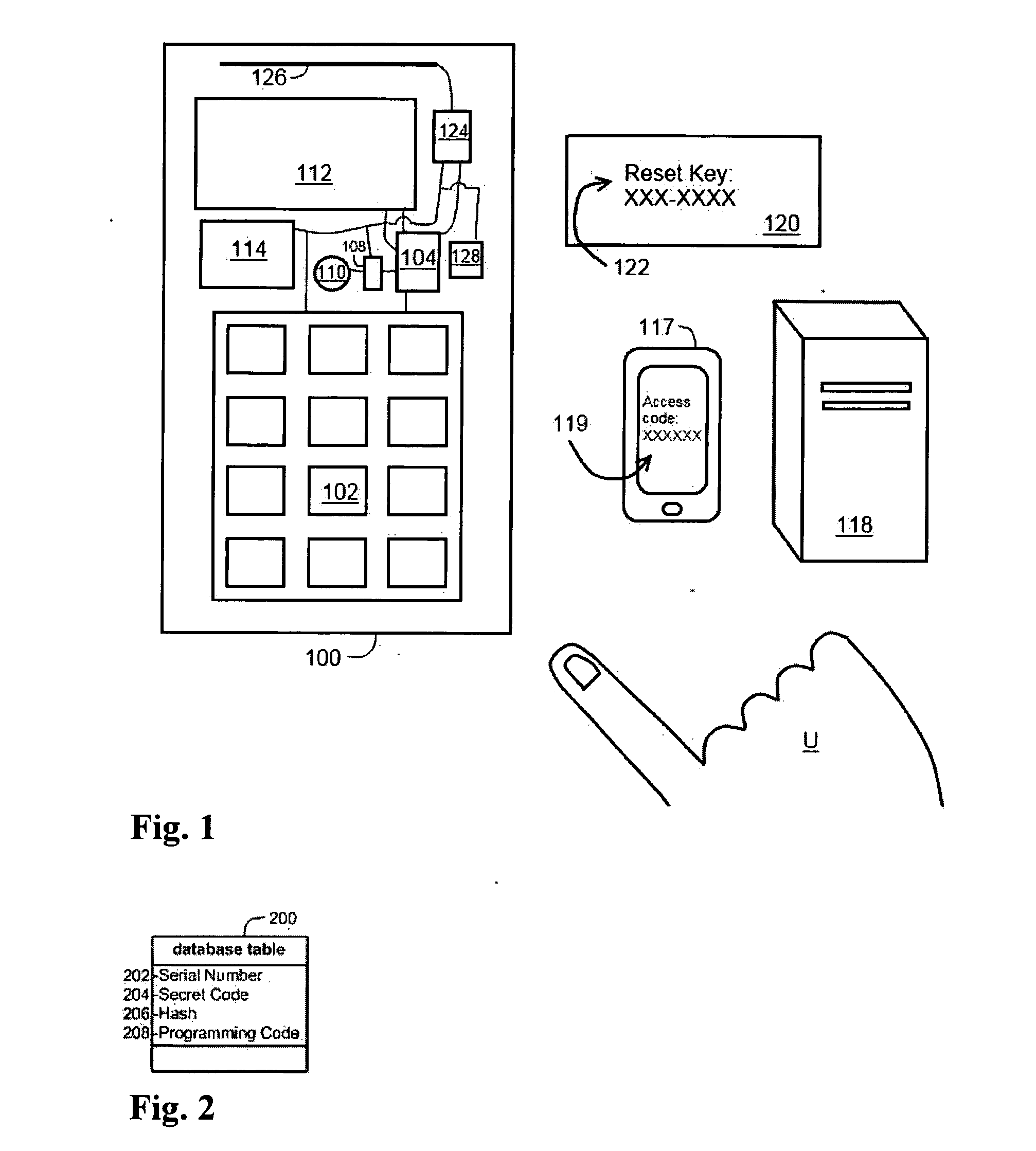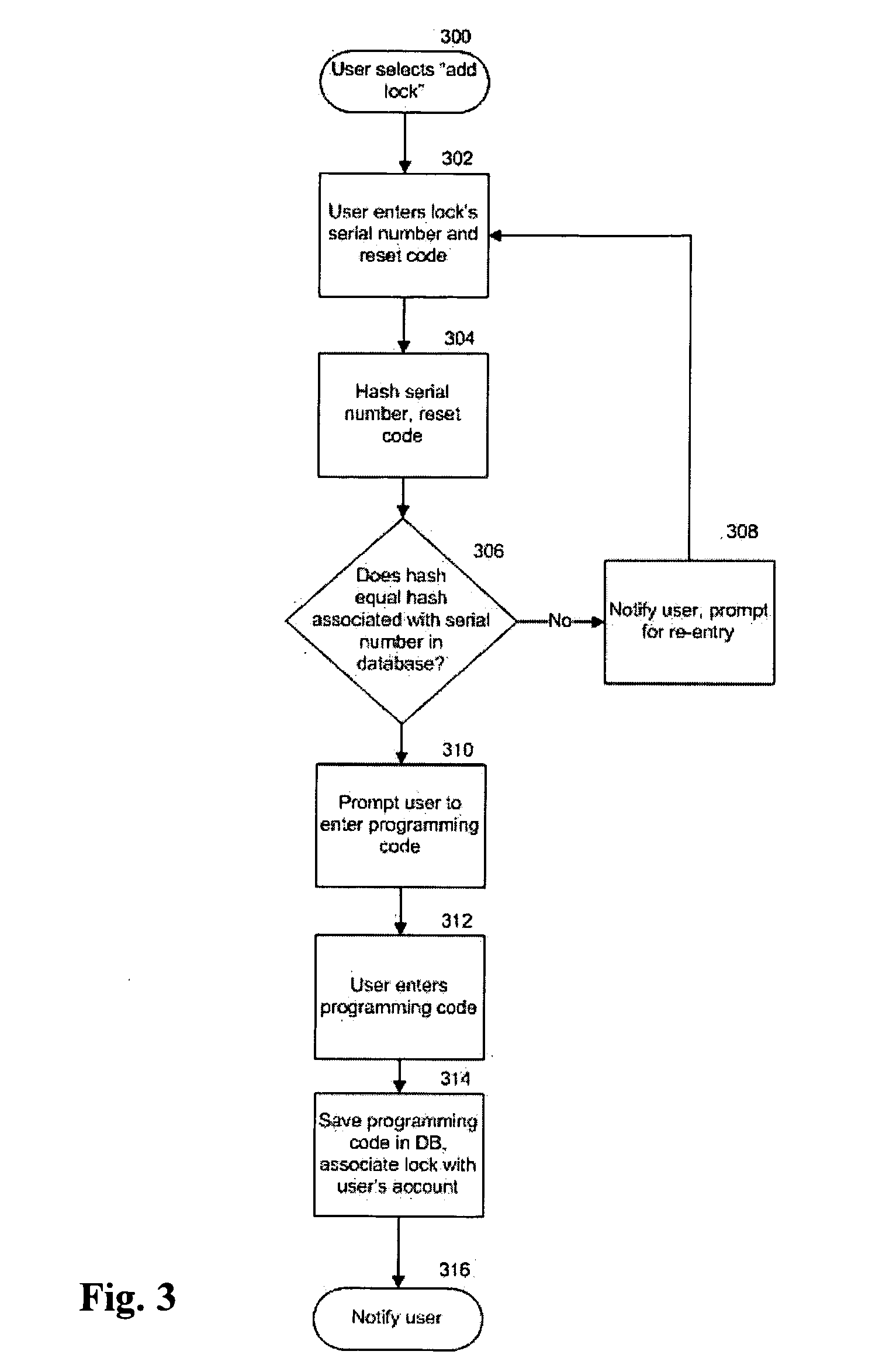Electronic lock and method
a technology of electronic locks and locks, applied in the field of electronic locks, systems and methods, can solve problems such as the possibility of a security breach, the inability of the lock owner to establish a tedious routine, and the serious security flaw of the static access cod
- Summary
- Abstract
- Description
- Claims
- Application Information
AI Technical Summary
Benefits of technology
Problems solved by technology
Method used
Image
Examples
Embodiment Construction
[0036]With reference to the accompanying Figures, in accordance with the present invention, a lock, system and method for providing low-maintenance, dynamic access to an un-networked lock are described in this section. That is, the lock is automatically reprogrammed periodically without communicating with a remote server. In this way, the lock, for example, allows a property manager to give a guest a code that will allow the guest to enter a rental property for only the period of the guest's stay. Currently, a manager must either manually change the code after the guest's stay is complete, the lock must connect to a network, or the lock must be reprogrammed by a key device that instructs the lock to change its access “code” from an old code to a new code. It is to be understood for the purposes of this description that “code,” unless otherwise specified, can refer either to an electronic signal or pattern associated with a key device or to a sequence of alphanumeric or other symbols...
PUM
 Login to View More
Login to View More Abstract
Description
Claims
Application Information
 Login to View More
Login to View More - R&D
- Intellectual Property
- Life Sciences
- Materials
- Tech Scout
- Unparalleled Data Quality
- Higher Quality Content
- 60% Fewer Hallucinations
Browse by: Latest US Patents, China's latest patents, Technical Efficacy Thesaurus, Application Domain, Technology Topic, Popular Technical Reports.
© 2025 PatSnap. All rights reserved.Legal|Privacy policy|Modern Slavery Act Transparency Statement|Sitemap|About US| Contact US: help@patsnap.com



